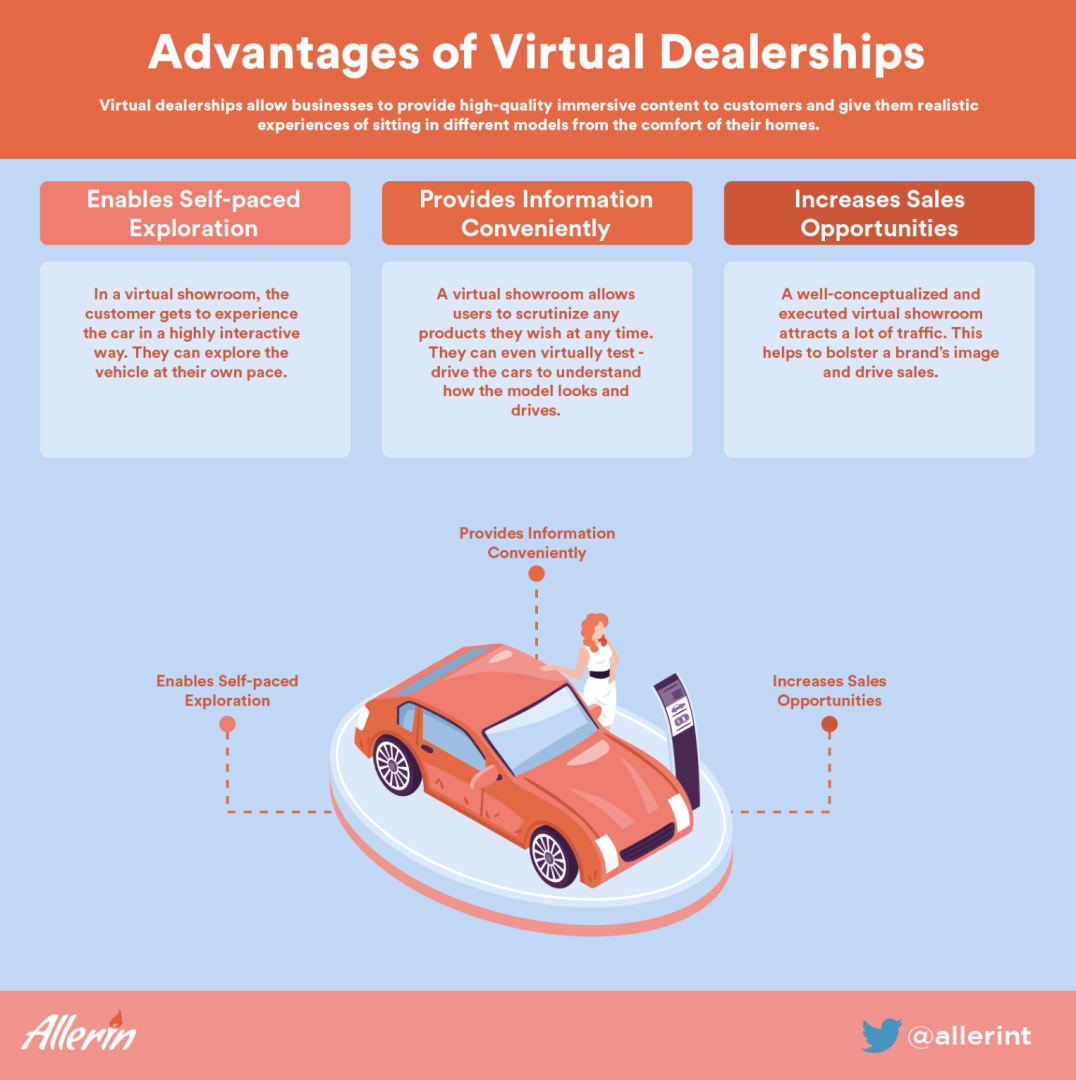Comments
- No comments found

Virtual dealerships allow businesses to provide high-quality immersive content to customers and give them realistic experiences of sitting in different models from the comfort of their homes.
The onset of COVID-19 sent shockwaves through not just the automobile industry, but the entire global economy. Reasons such as lockdowns, social distancing, employee layoffs, and shut-downs in manufacturing units led to massive financial losses. Naturally, car sales had decreased by an average of 16% globally. However, this created a paradigm shift in the way things are sold. The physical world got shut, but the digital world opened up and provided a gateway for many industries to start recovering their losses. Automobile companies banked on it too. Due to the physical showrooms shutting, people began buying more cars online, leading to car sales getting back on track slowly. Shopping for cars virtually has now become a norm. The trend of online vehicle sales is expected to grow to $722.79 billion by 2030 as more people see its benefits. Automakers are creating virtual dealerships to make online car selling more engaging and immersive. It helps to bridge the gaps between a physical and a typical online experience in unique and interesting ways.
There are multiple challenges that can be overcome by using virtual dealerships as a platform for driving sales:

In a physical showroom, salespeople can get impatient and not care about providing customers with the required information and just force a sale on them. Whereas on an e-commerce website, customers don’t have enough information to make the significant investment that a new vehicle requires. In a virtual showroom, the customer gets to experience the car in a highly interactive way. They can explore the vehicle at their own pace. Moreover, their questions are also answered on the spot through chatbots and other personalized services.
In a physical showroom or even an e-commerce website, a consumer has to do a lot of research before deciding on the model they want to buy. Sometimes, a customer may visit a car dealership but return with a pamphlet as the vehicle isn’t available for display. A virtual showroom allows users to scrutinize any products they wish at any time. They can even virtually test-drive the cars to understand how the model looks and drives.
A physical dealership provides certain hindrances in the form of distance and inconvenience, and typical e-commerce websites aren’t engaging or immersive enough to attract customers. A virtual dealership offers the user an interactive and immersive journey, while offering ease of access. One of the main reasons virtual dealerships are being adopted is to attract the younger generations, such as millennials and Gen Z. A well-conceptualized and executed virtual showroom attracts a lot of traffic. This helps to bolster a brand’s image and drive sales.
Like any industry, the automobile market is also a competitive field. The need to be the dominant force in the market is a goal for all automakers. This is why they need to be dynamic enough to cater to the needs and wants of the customer. To attract an increasingly younger clientele, a virtual dealership is a platform that needs to be explored in depth by the automotive industry. It offers solutions to challenges that physical showrooms or e-commerce websites simply can’t match. By providing high-quality and immersive 3D content, virtual dealerships can become the primary mode of selling vehicles.
Naveen is the Founder and CEO of Allerin, a software solutions provider that delivers innovative and agile solutions that enable to automate, inspire and impress. He is a seasoned professional with more than 20 years of experience, with extensive experience in customizing open source products for cost optimizations of large scale IT deployment. He is currently working on Internet of Things solutions with Big Data Analytics. Naveen completed his programming qualifications in various Indian institutes.
Leave your comments
Post comment as a guest